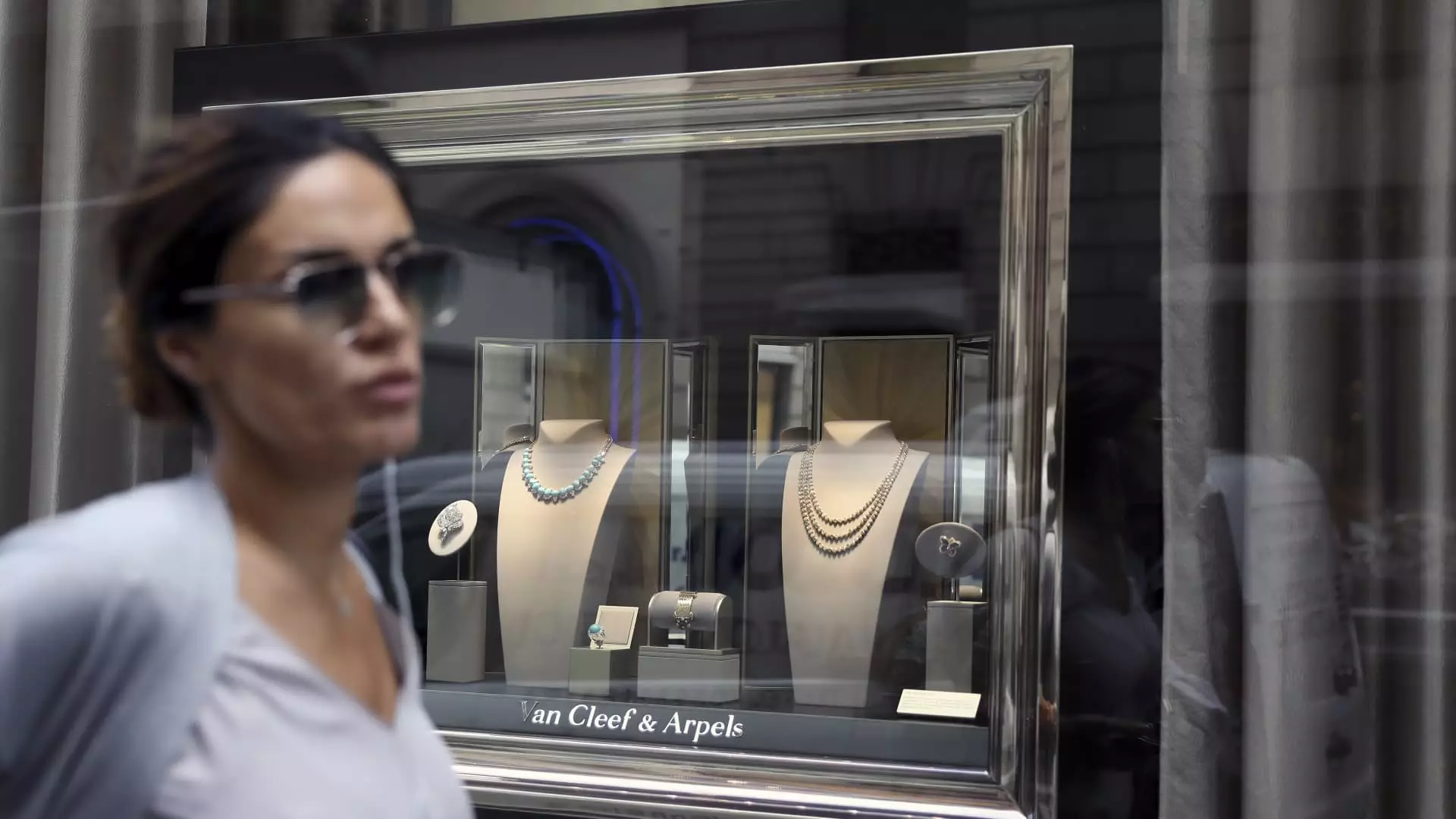In a world where economic uncertainty looms large and luxury consumer behavior shows signs of restraint, the persistently lofty ring on the finger of the affluent speaks volumes about societal values. While mainstream luxury shoppers are tightening their belts, the wealthiest individuals are unabashedly showcasing their wealth with exclusive jewels. A diamond-encrusted ring here, a one-of-a-kind gemstone necklace there—these ornaments are not merely adornments; they embody status, exclusivity, and an almost religious adherence to the cult of luxury. It is within this fascinating dichotomy between overspending and careful consumerism that Swiss luxury powerhouse Richemont continues to excel.
This luxury group, which boasts prestigious brands like Cartier, Buccellati, and Van Cleef & Arpels, is at the forefront of this jewelry resilience. While other brands grapple with an era of declining sales, Richemont reported a significant 11% surge in sales from its Jewelry Maisons division during the fiscal fourth quarter. This success does not simply rest on the aesthetic appeal of their products but on a cultural narrative that frames jewelry as timeless investments rather than ephemeral purchases. In a world of hyper-competition where brand loyalty can evaporate faster than a trend, Richemont successfully transcends the mundane by creating an aspirational ethos surrounding its jewelry lines.
The Slippery Slope of the Luxury Watch Market
However, the luxury ecosystem is not united in its prosperity. The watch industry, a segment historically aligned with the concept of luxury, finds itself navigating a tricky current. The recent performance of Richemont’s Specialist Watchmakers division illustrates this unsettling shift. Reports indicate a staggering 13% decline in watch sales in 2024, a devastating figure fueled by a volatile Chinese market. As the blockchain of new luxury evolves, a palpable disconnect emerges: the jewelry sector seems to be thriving, while watches languish in infamy.
As Luca Solca, a notable voice in luxury market analysis, insightfully pointed out, the COVID-era surge in watch purchases was akin to a new-age Treasure Island, enticing consumers into a consumerist frenzy. “Everybody and their dog has bought a watch out of Covid-19,” he astutely remarked, and now, those purchases are settling into the hands of the buyers, creating an over-saturation in the market that will not be easily absorbed. The disparity in consumer behavior towards jewelry and watches provides a clear metaphor inclusive of lifestyle changes—where fine jewelry is becoming an increasingly preferred mode of expression in opulence.
The Economic Tug-of-War
Despite this burgeoning success, one cannot ignore the looming challenges that threaten Richemont’s continued growth trajectory. In an unpredictable global economy, a robust Swiss franc coupled with rising gold prices introduces a freshness to the challenging terrain of luxury retail. Whether consumers will still be willing to spend lavishly amid rising costs is a question that shall haunt luxury brands.
Moreover, the company also faces increasing pressure from geopolitical issues like tariffs, which add another layer of complexity to their strategy. The inability to raise prices in a manner that both preserves their luxury cachet and satisfies investor expectations might be a precarious balancing act. While Richemont’s chairman, Johann Rupert, reassures that they will not succumb to price hikes that do not align with sustainable strategies, analysts remain skeptical.
Indeed, the sentiment that “the business is increasingly reliant on its jewelry arm” is not mere speculation but a forecast of potential risks that could jeopardize Richemont’s market dominance. As pointed out by investment analysts, the entire luxury sphere is fraught with potential pitfalls—weakening currencies, fierce competition, and evolving consumer preferences all threaten to disrupt the very fabric of high-end luxury dealings.
The Dichotomy of Luxury Experience
What we witness in this unfolding narrative is not just a tale of corporate success and failure but rather a cultural landscape sculpted by shifting societal values. The obsessive quest for luxury, especially in jewelry, reflects not only our desire for beauty but also an incessant craving for identity in an increasingly homogenized world. Consumers are meticulously re-defining what it means to invest in luxury—favoring tokens of permanence like jewelry over relatively transient fashion items.
Richemont’s triumph in the jewelry sector offers a glimmer of hope amid the broader malaise enveloping the luxury market. The ability to rally loyalty around heritage and craftsmanship is aiding the company in carving its niche even as others falter. Yet, as the territory continues to morph with societal shifts and economic challenges, one can only hope that Richemont’s leadership in the jewelry space serves as both an inspiration and a cautionary tale for the entire luxury industry as it navigates the complexities of modern consumerism.


Leave a Reply